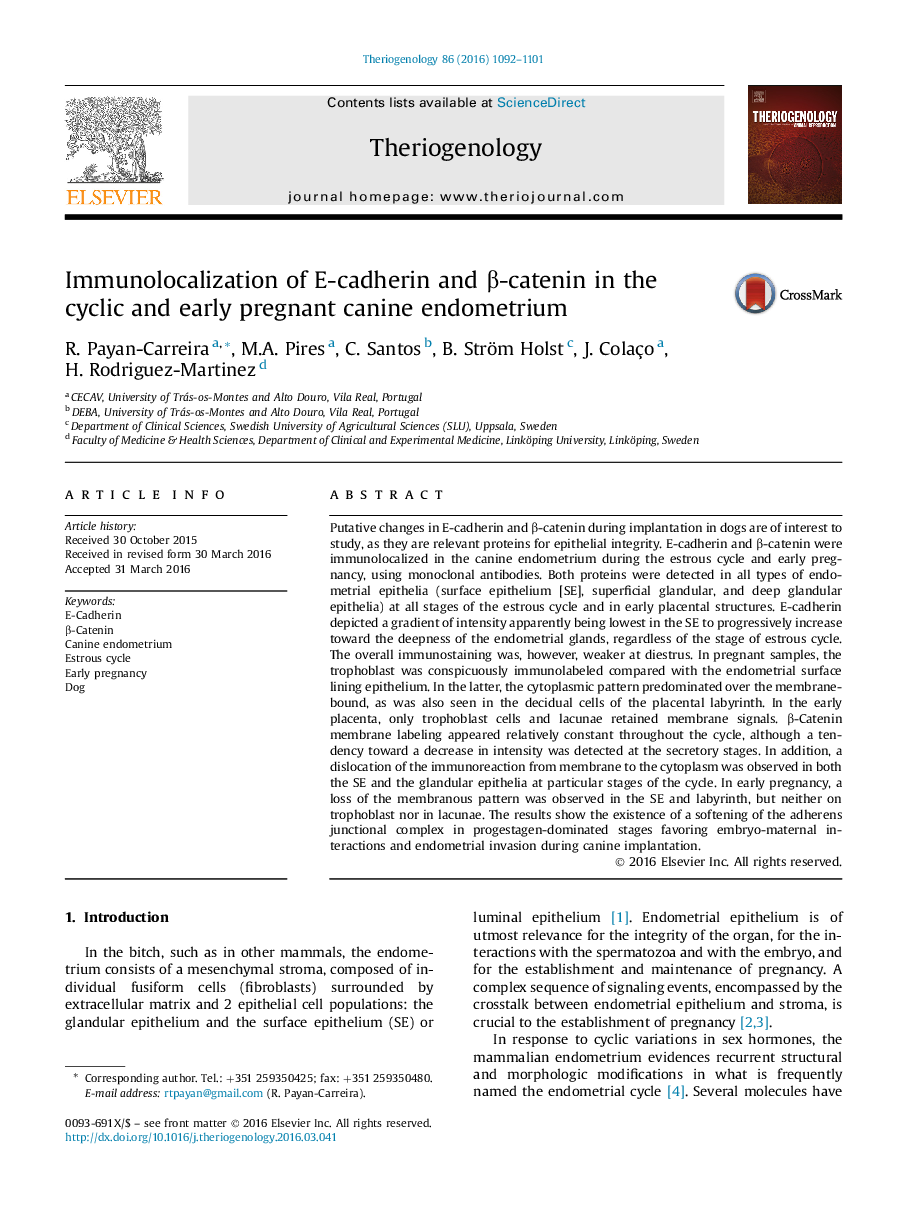| Article ID | Journal | Published Year | Pages | File Type |
|---|---|---|---|---|
| 2094734 | Theriogenology | 2016 | 10 Pages |
Putative changes in E-cadherin and β-catenin during implantation in dogs are of interest to study, as they are relevant proteins for epithelial integrity. E-cadherin and β-catenin were immunolocalized in the canine endometrium during the estrous cycle and early pregnancy, using monoclonal antibodies. Both proteins were detected in all types of endometrial epithelia (surface epithelium [SE], superficial glandular, and deep glandular epithelia) at all stages of the estrous cycle and in early placental structures. E-cadherin depicted a gradient of intensity apparently being lowest in the SE to progressively increase toward the deepness of the endometrial glands, regardless of the stage of estrous cycle. The overall immunostaining was, however, weaker at diestrus. In pregnant samples, the trophoblast was conspicuously immunolabeled compared with the endometrial surface lining epithelium. In the latter, the cytoplasmic pattern predominated over the membrane-bound, as was also seen in the decidual cells of the placental labyrinth. In the early placenta, only trophoblast cells and lacunae retained membrane signals. β-Catenin membrane labeling appeared relatively constant throughout the cycle, although a tendency toward a decrease in intensity was detected at the secretory stages. In addition, a dislocation of the immunoreaction from membrane to the cytoplasm was observed in both the SE and the glandular epithelia at particular stages of the cycle. In early pregnancy, a loss of the membranous pattern was observed in the SE and labyrinth, but neither on trophoblast nor in lacunae. The results show the existence of a softening of the adherens junctional complex in progestagen-dominated stages favoring embryo-maternal interactions and endometrial invasion during canine implantation.
